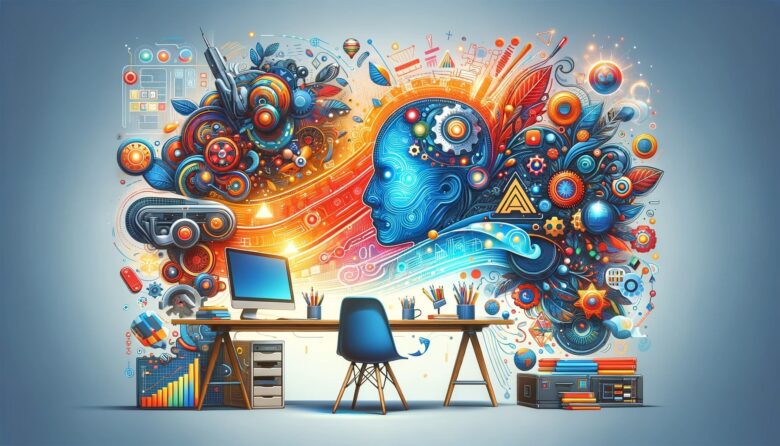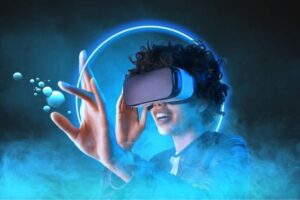Creativity is defined as the ability to generate new ideas and solutions. The introduction of Artificial Intelligence into creativity provides numerous opportunities, but also presents certain obstacles and difficulties. AI use in creative processes poses issues related to intellectual property and authorship rights, while its incorporation can lead to bias propagation present in training data – raising ethical considerations involving diversity and fairness.
1. Social Media
Artificial intelligence is revolutionizing art and design, creating unique pieces that push creative boundaries further than ever before. However, this change comes with its own set of challenges. Concerns surrounding copyright and ownership arise due to AI’s ability to imitate the works of living artists, while its use also raises issues regarding the authenticity of digital works as well as long-term preservation.
Other issues involve the danger that technology might overshadow artistic expression and result in global cultural convergence where traditional voices become subsumed into global trends. Navigating this complex set of issues is vital in order for AI to enhance human creativity while still upholding artistic integrity and ethical standards.
2. Digital Art
Utilizing technology in creative processes opens up new revenue streams and allows artists to collaborate across disciplines and cultures, yet some fear these technologies could overshadow traditional artistic techniques.
Generative AI holds the potential to transform how we view art and creativity, but its definition will need to be clarified before this happens. If we consider Duchamp’s urinal or Tracey Emin’s bed to be works of art, does this imply AI-generated pieces can also be considered artwork? In order for this definition to apply fairly, new guidelines would need to take account of collaborations between humans and machines as well as stronger copyright protections for digital works of art.
3. 3D Printing
Advancements in 3D printing now enable designers to develop prototypes and refine designs before committing to physical production, providing greater design iteration to ensure products match aesthetic and functional needs Generational AI models have the capacity to generate innovative concepts quickly and efficiently, but does that qualify them as creativity? A recent study was investigated.
Research demonstrated that large language models like OpenAI’s GPT-4 were capable of producing ideas that appear creative, yet lack combinational creativity, exploratory creativity, or may rely on harmful stereotypes in stories they produce. Strengthening intellectual property (IP) protections would provide more incentive for human ingenuity within established art forms.
4. Virtual Reality
Artificial Intelligence (AI) is revolutionizing art by becoming an active participant in its creation. From painting to music composition, machine learning models now enable algorithms to produce artworks that are almost indistinguishable from human artists’ efforts.
These technologies also open up new avenues of interaction with art, providing more personal connections – for instance, VR is allowing people to step inside paintings or walk around sculptures. Art-making technology has proven revolutionary, but it also raises critical ethical concerns. Who owns pieces produced by algorithms? Furthermore, critics fear an excessive reliance on AI may erode human creativity.
5. Neural Art
AI tools have become more accessible, empowering anyone without technical expertise to create art and design. This can increase accessibility as well as widen the diversity of both art creation and consumption.
However, as this technology becomes a more integral part of creative processes, ethical concerns arise as artists and machines collaborate in pushing artistic imagination further than ever before. Marketers have also begun using generative art techniques to generate eye-catching visuals that resonate with specific audiences – giving customers tailored experiences while increasing customer engagement and conversions – an ever-evolving trend that may alter the future of art and design.
6. Data-Driven Installations
Artificial Intelligence (AI) is revolutionizing art, music, and literature by unlocking new forms of creativity. However, using AI for creative work raises complex issues around authorship and copyright that require greater understanding in order to have an impactful creative impact on society.
Though some fear the introduction of AI into art will reduce human creativity, others see it as an opportunity to enhance artistic expression. Artists are already making use of AI solutions to break boundaries and reach uncharted territory; it’s vital that we don’t become overreliant on these solutions, as this could stifle innovation and creativity, ultimately slowing progress within creative industries.
7. Artificial Intelligence-Generated Art
Artificial intelligence has the power to revolutionize art and design. It offers new ways for creating and experiencing artwork while increasing efficiency and decreasing costs. Washington-based roboticist Pindar Van Arman experimented with early versions of GANs to produce painterly works like his Emerging Faces series in 2017. These paintings are striking and humanistic in style.
AI-generated art has generated considerable debate. Some artists question its value relative to human creativity by copying it; others maintain that AI can create unique and original work – for instance, by entering image prompts into programs such as Stable Diffusion or MidJourney, which generate arresting digital canvases, or using vast musical databases as starting points for music AI generation.
8. Artificial Intelligence & Creativity
Generative AI is revolutionizing creativity by providing artists with access to traditional tools for artistic creation without them. Platforms such as Artbreeder and DeepDream allow users to combine images to produce amazing and unique artworks. Although AI offers many advantages, research into its effects on human creativity remains limited. Future studies should investigate how generative AI could influence divergent and convergent thinking processes.
These developments push the limits of artistic expression, testing traditional notions of authorship and authenticity. But technology also provides artists with new tools and techniques for creative experimentation that could increase team creativity overall.




